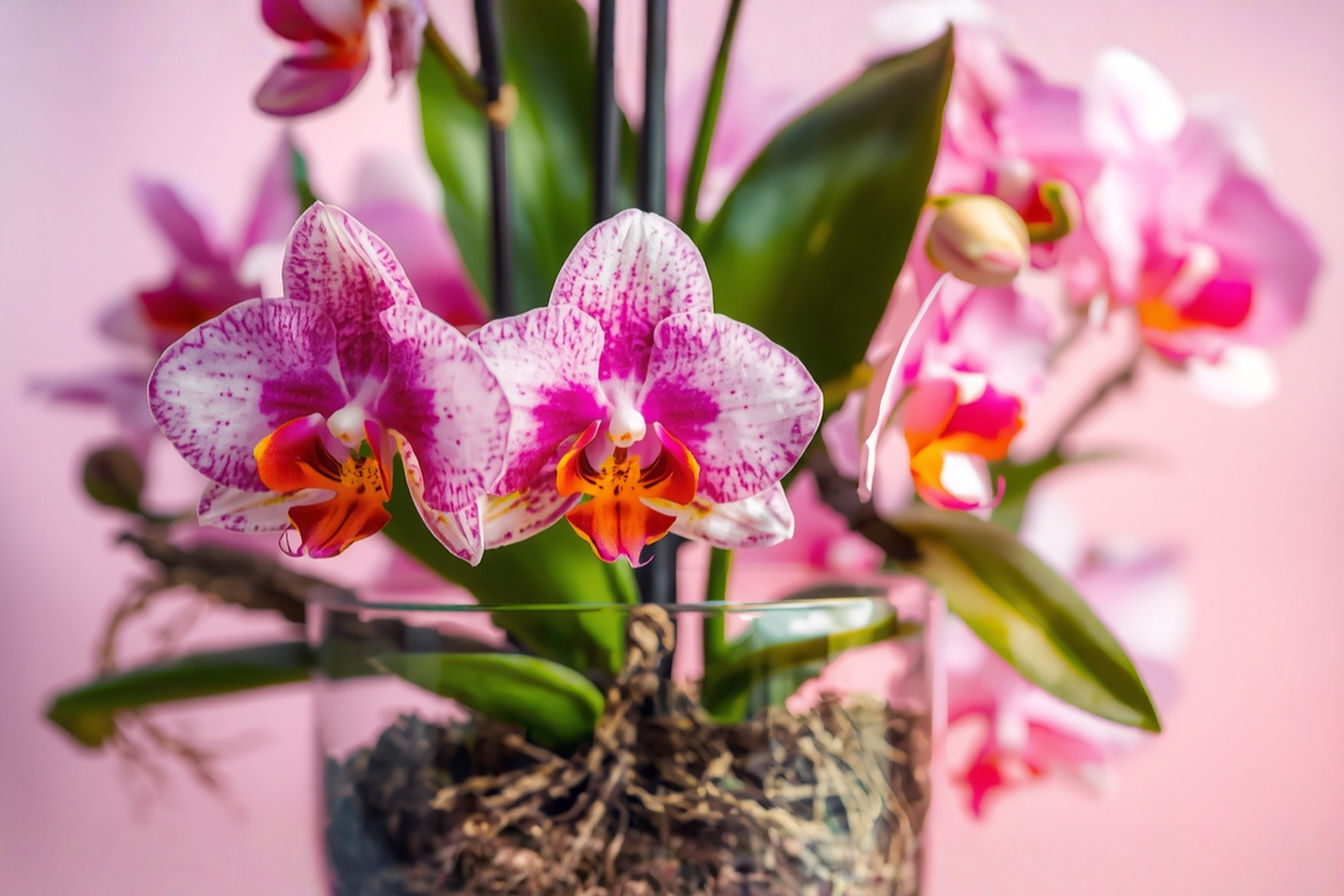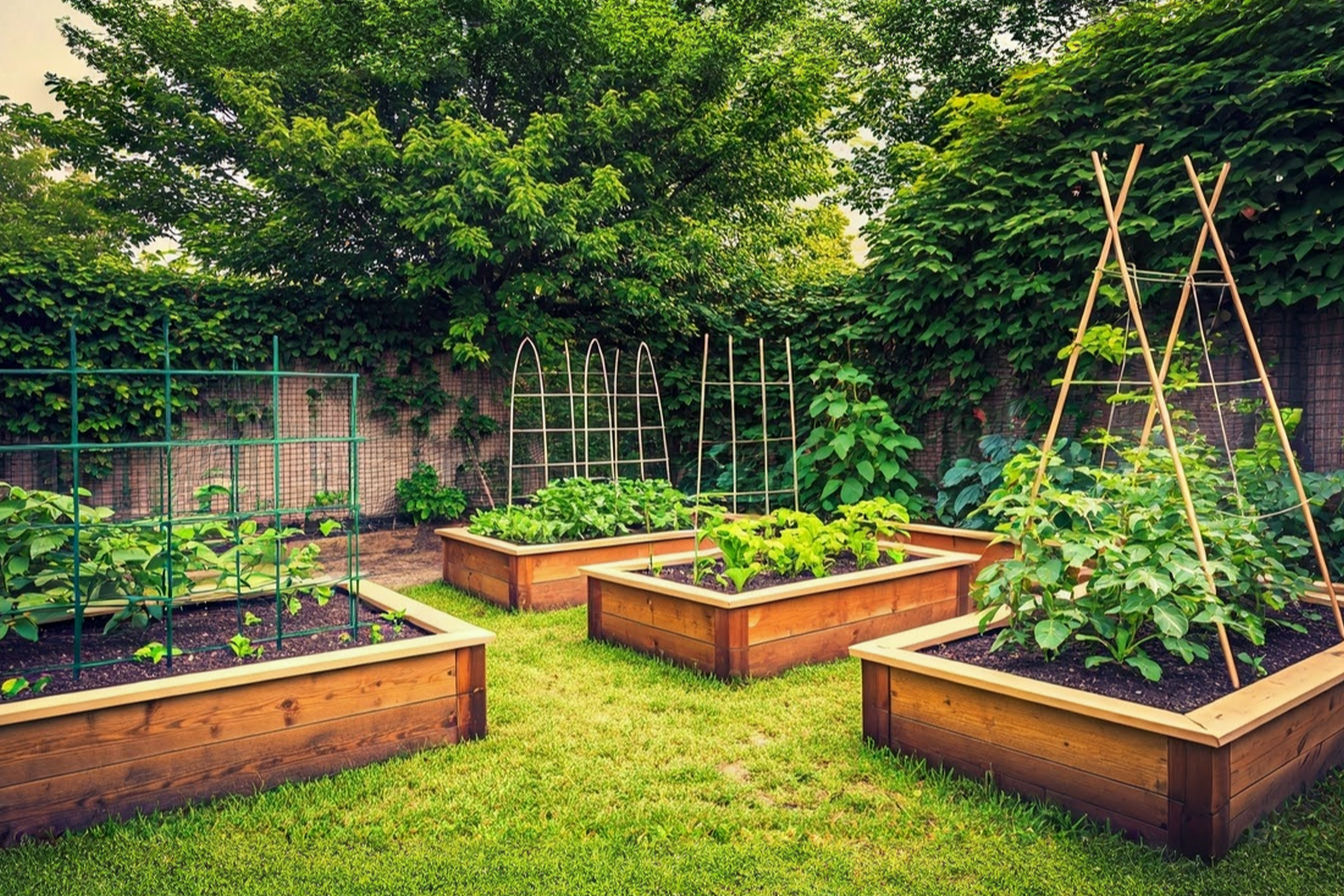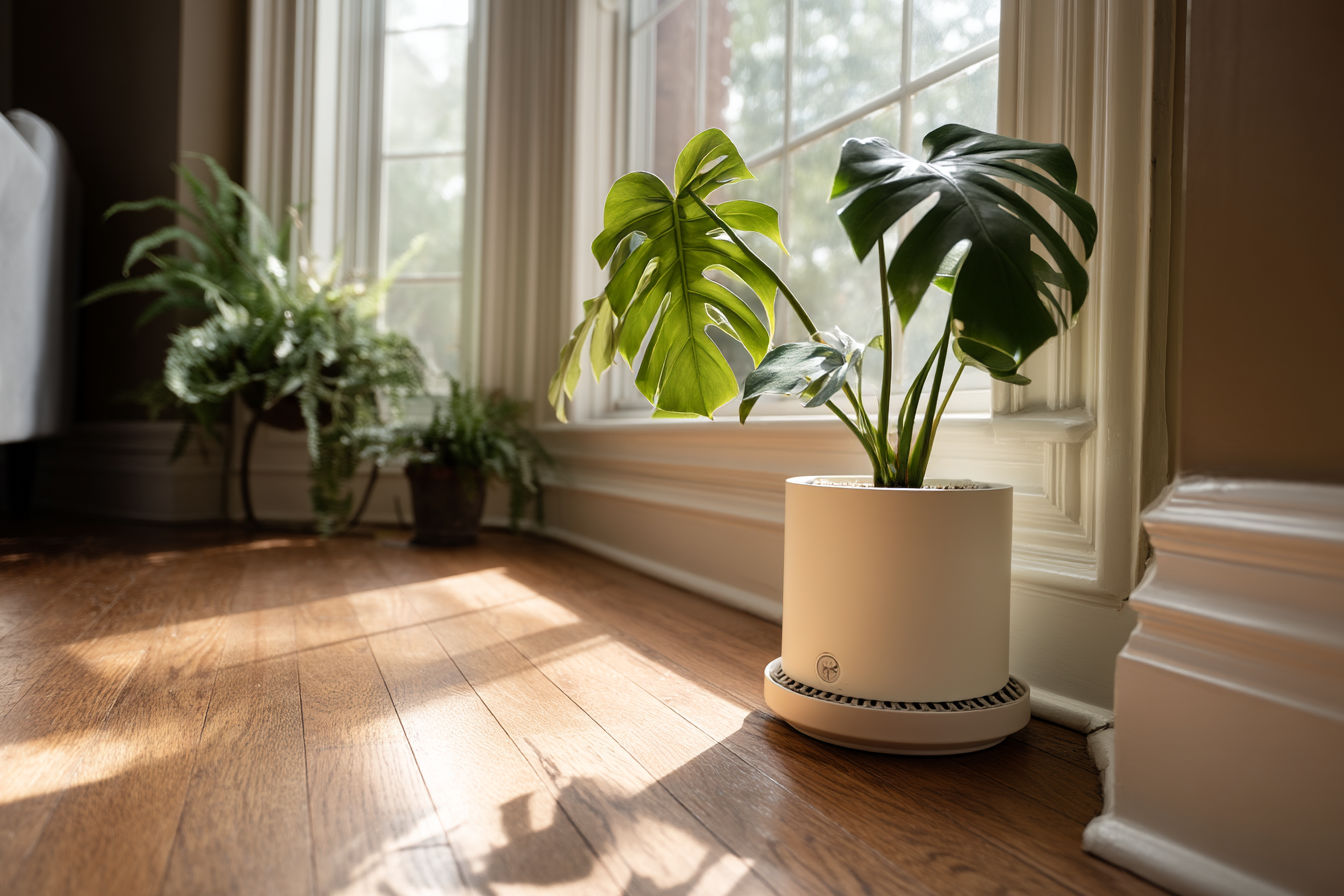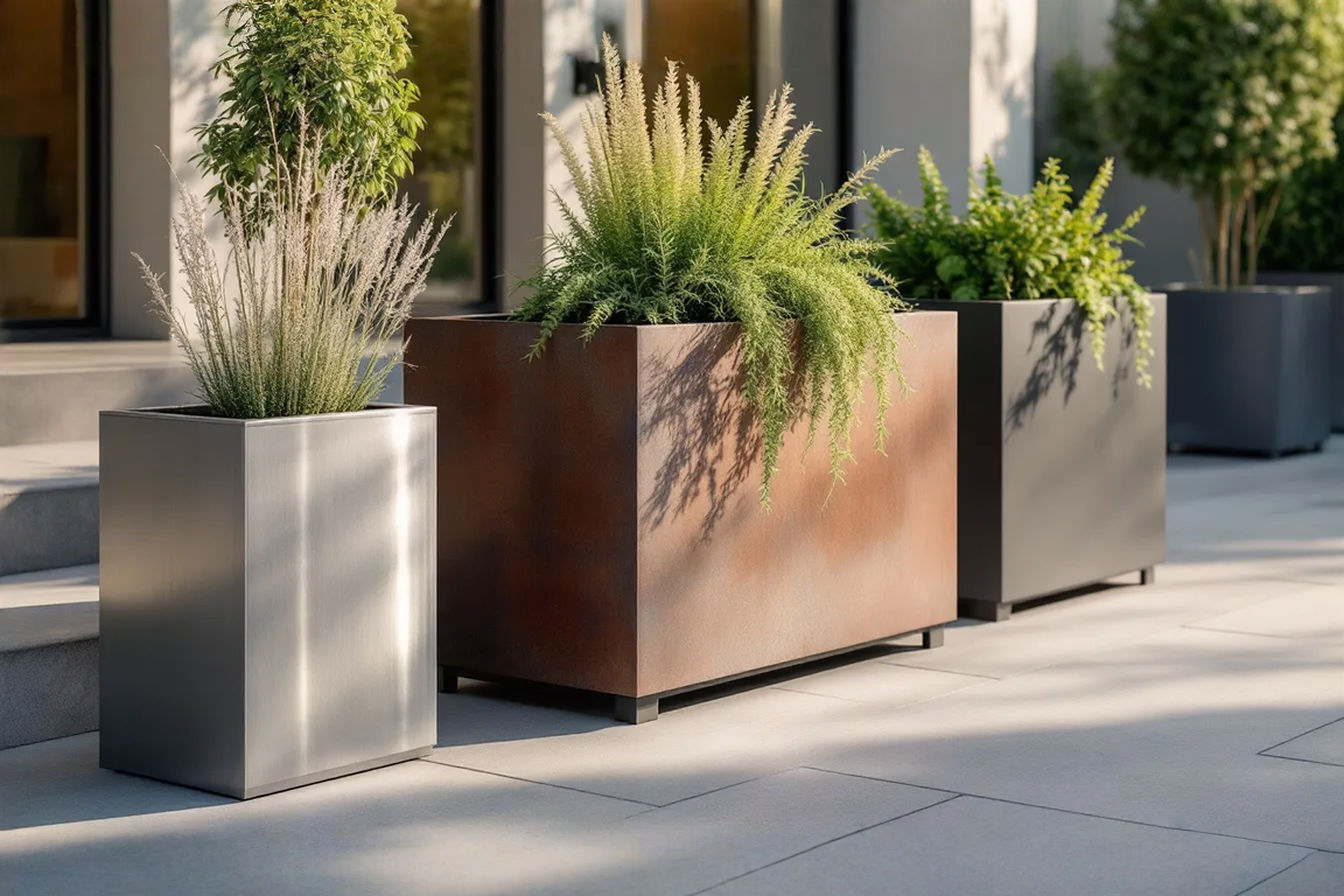This post may contain affiliate links. If you make a purchase through these links, we may earn a commission at no additional cost to you.
Have you ever looked at a blank wall in your home and imagined it transformed into a lush tapestry of living plants? That vision is now within reach for anyone willing to embrace the vertical gardening revolution. Wall-mounted planters have evolved from simple hanging pots to sophisticated systems that create stunning living wallpaper, bringing nature indoors in ways previously unimaginable. This innovative approach to gardening isn’t just visually striking—it offers practical solutions for urban dwellers, apartment residents, and anyone looking to maximize their growing space while adding breathtaking natural beauty to their environment.
In this comprehensive guide, we’ll explore how wall-mounted planters are revolutionizing interior and exterior design while providing the practical knowledge you need to create your own living walls. From understanding various systems and selecting ideal plants to maintenance tips and design inspiration, this article covers everything you need to join the vertical gardening movement and transform your space with the ultimate in botanical décor.
Understanding the Vertical Gardening Movement
The concept of growing plants vertically isn’t entirely new. Historical evidence shows the famous Hanging Gardens of Babylon used sophisticated terracing systems to create verdant vertical displays. Medieval monastery gardens often trained fruit trees against walls to maximize sun exposure and growing space. However, the modern vertical gardening movement represents an innovative fusion of these ancient practices with contemporary design principles and materials.
Today’s living walls emerged as a response to increasing urbanization and the human desire to maintain connections with nature despite limited space. French botanist Patrick Blanc pioneered modern vertical garden techniques in the late 20th century, developing hydroponic systems that allowed plants to grow on vertical surfaces without soil. His revolutionary work transformed building facades into botanical masterpieces and sparked worldwide interest in vertical planting possibilities.
The movement has evolved rapidly over the past two decades, with technological advances creating increasingly sophisticated and accessible systems. What began primarily in commercial and high-end residential applications has democratized into options suitable for nearly any budget and skill level. The current popularity of wall-mounted planters reflects broader societal trends toward biophilic design—incorporating nature into our built environments to improve well-being and aesthetics.
These living installations provide impressive environmental benefits beyond their visual appeal. Vertical gardens act as natural air filters, removing toxins and producing oxygen. They moderate indoor temperature fluctuations, potentially reducing energy costs. In urban environments, they help mitigate the heat island effect while providing critical habitat for pollinators and other beneficial organisms.
Perhaps most significantly, vertical gardens represent the ultimate space optimization strategy. They transform underutilized vertical surfaces into productive growing areas, enabling gardening in locations previously considered unsuitable. This aspect particularly resonates with urban gardeners and apartment dwellers seeking to maximize limited square footage while surrounding themselves with greenery.
Types of Wall-Mounted Planter Systems
The market offers a diverse array of wall-mounted planter systems, each with distinct advantages for different applications. Understanding these options helps you select the right approach for your specific needs and constraints.
Pocket systems and fabric planters provide some of the most accessible entry points into vertical gardening. These typically feature fabric pouches or plastic pockets mounted on a backing material, with each pocket holding an individual plant. The flexibility of these systems makes them ideal for beginners and those seeking adaptability in their designs. Brands like Woolly Pocket and Florafelt offer ready-made options, though DIY versions using repurposed materials remain popular for budget-conscious gardeners.
Modular panel systems represent a more structured approach, using interlocking panels containing growing medium. These systems offer exceptional versatility in creating custom patterns and designs. The panels typically attach to a framework mounted on the wall, creating a cohesive living display. Companies like LiveWall and GSky have developed sophisticated versions for commercial applications, though simplified versions exist for residential use.
Trellis and grid systems focus on supporting climbing plants rather than containing growing medium directly. These create stunning green walls with vines and climbers like ivy, jasmine, or climbing roses. The simplicity of these systems makes them particularly suitable for outdoor applications, though they require more patience as plants need time to grow and cover the supporting structure.
Hydroponic wall systems eliminate soil entirely, instead feeding plants through nutrient-rich water circulated through the structure. These sophisticated systems excel in indoor environments where weight and moisture control are crucial considerations. While typically more expensive and complex, they offer unparalleled precision in plant care and often feature integrated irrigation.
When comparing options, consider whether you prefer freestanding versus built-in solutions. Freestanding systems offer flexibility and portability—ideal for renters or those who like to redecorate frequently. Built-in options integrate more seamlessly with architecture but represent a more permanent commitment.
The choice between commercial versus DIY approaches depends on your budget, skills, and desired aesthetic. Commercial systems typically offer greater reliability and professional appearance but at significantly higher cost. DIY options allow for personalization and substantial savings but require more time and effort in both construction and maintenance.
Selecting the Perfect Location for Your Living Wall
The success of your vertical garden begins with thoughtful location selection. Several critical factors influence plant health, maintenance requirements, and overall impact of your installation.
Light requirements assessment should be your first consideration. Most plants need adequate light to thrive, making this a primary determinant of location suitability. South-facing walls typically provide the most sunlight for outdoor installations in the Northern Hemisphere, while east or west exposures offer moderate light. For indoor applications, walls near windows often work best, though supplemental grow lights expand your options for darker areas. Take time to observe how light moves through your space throughout the day before committing to a location.
Structural considerations cannot be overlooked, as wall-mounted gardens add significant weight to your walls—particularly when saturated with water. Ensure your chosen wall can support this load, especially for larger installations. Outdoor brick or concrete walls typically handle the weight well, while indoor drywall may require special mounting to structural studs. Consider consulting a professional for large or complex installations to prevent structural damage.
Humidity and temperature factors significantly impact plant selection and maintenance requirements. Areas with naturally higher humidity, like bathrooms or kitchens, may require less frequent watering but could promote mold growth without proper ventilation. Temperature fluctuations near exterior doors or heating vents can stress plants, so choose species accordingly or select a more stable environment.
The distinction between indoor versus outdoor placement brings different considerations. Indoor living walls typically face fewer extreme weather challenges but may struggle with inadequate light or dry air from heating systems. Outdoor installations contend with seasonal temperature swings but benefit from natural rainfall and typically better air circulation.
For indoor applications, certain rooms offer particular advantages. Bathrooms provide humidity beneficial to tropical plants, while kitchens allow easy access to herbs for cooking. Living rooms and entryways create dramatic visual impact for guests, though these high-visibility areas demand more consistent maintenance to maintain their appeal.
Exterior wall considerations include exposure to prevailing winds, rainfall patterns, and seasonal sun angles. North-facing walls in northern climates may experience freezing temperatures unsuitable for many plants, while south-facing walls in hot regions might create scorching conditions requiring extremely heat-tolerant species.
Choosing the Right Plants for Wall-Mounted Gardens
Plant selection represents perhaps the most creative and crucial aspect of creating successful living walls. The right choices ensure your vertical garden thrives while achieving your aesthetic goals.
The best plant varieties for vertical growth typically share certain characteristics: relatively compact growth habits, shallow root systems, and tolerance for the unique growing conditions of vertical gardens. Trailing plants like pothos, philodendron, and string of pearls create cascading effects that soften the edges of your installation. Compact upright growers like peace lilies, ferns, and small succulents provide structure and visual interest without outgrowing their space.
Always match plants to your wall’s light conditions for optimal results. For low-light areas, consider reliable performers like ZZ plants, snake plants, and certain philodendron varieties. Moderate light locations support a broader range of options including pothos, peace lilies, and many ferns. Bright light areas accommodate succulents, colorful crotons, and flowering plants like begonias.
Drought-tolerant options reduce maintenance requirements and provide insurance against irrigation failures. Succulents and cacti excel in this regard, but unexpected candidates include spider plants, cast iron plants, and certain bromeliads. These resilient species withstand occasional neglect while maintaining their appearance.
Consider seasonal variations in your planning, especially for outdoor installations. Deciduous plants provide changing interest throughout the year but may leave bare spots in winter. Evergreen varieties maintain consistent coverage but offer less seasonal drama. Some indoor plants also undergo dormant periods requiring adjusted care—research these patterns before committing to specific varieties.
Edible options add functionality to your living wall. Herbs thrive in vertical systems, with basil, thyme, mint, and rosemary performing particularly well. Some compact vegetables like lettuce, strawberries, and cherry tomatoes adapt to vertical growth with adequate light and water. These productive additions turn decorative features into functional food sources.
Combining plants for visual impact requires consideration of growth rates, texture, and color. Pairing fast and slow growers can create maintenance challenges as aggressive species overwhelm their neighbors. Instead, group plants with similar growth characteristics while varying leaf sizes, shapes, and colors for visual interest. Consider how plants will develop over time, allowing space for mature growth.
Native plant considerations become particularly important for outdoor installations. Local species typically require less maintenance, support regional wildlife, and withstand local climate conditions. Research native plants with vertical growth habits or those adaptable to container conditions in your specific region.
DIY Wall Planter Projects
Creating your own wall-mounted garden system offers personalization, cost savings, and the satisfaction of crafting something unique. Several approachable projects provide entry points for DIY enthusiasts.
Simple starter projects help build confidence before tackling more complex installations. A row of mounted terra cotta pots creates an effective herb garden for kitchen walls. Repurposed gutters mounted horizontally create linear planters ideal for strawberries or trailing flowers. Picture frames fitted with chicken wire and lined with moss accommodate multiple small plants in an artistic arrangement.
Materials selection significantly impacts the longevity and functionality of your system. Choose weather-resistant options for outdoor applications, such as cedar, plastic, or powder-coated metal. Indoor projects offer more flexibility, though moisture-resistant materials remain important. Consider weight when selecting containers—plastic provides lightweight options for walls with limited load-bearing capacity, while ceramic and concrete offer stability but require more substantial mounting.
For successful construction, follow these step-by-step considerations:
- Design your system on paper before purchasing materials
- Ensure proper drainage for each planting compartment
- Create a moisture barrier to protect your wall from water damage
- Install secure mounting that distributes weight appropriately
- Consider maintenance access in your design for long-term success
- Test your irrigation approach before planting
Budget-friendly options include repurposing everyday items into vertical planters. Shoe organizers provide ready-made pockets for small plants. Plastic bottles cut and mounted horizontally create individual planters. Wooden pallets, properly prepared and mounted securely, transform into substantial planting surfaces with minimal investment.
Upcycled container ideas add unique character to your vertical garden. Vintage coffee cans, once cleaned and drilled for drainage, create retro-styled herb planters. Old wooden dresser drawers mounted to walls create deep planting beds for larger specimens. Even used paint cans, thoroughly cleaned and prepared, transform into industrial-chic containers for drought-tolerant plants.
Mounting and installation tips help ensure safety and functionality. Always locate and utilize wall studs for supporting the weight of larger installations. Use appropriate anchors when studs aren’t available. Create a slight gap between your planting system and the wall to promote air circulation and prevent moisture damage. Install your system at a comfortable height for maintenance, considering your personal reach and the visual impact at different viewing angles.
Professional Living Wall Systems
For those seeking turnkey solutions or tackling large-scale installations, professional living wall systems offer sophisticated engineering and proven performance.
Leading commercial options include comprehensive systems from established companies. GSky’s Versa Wall uses removable planted panels for flexible design and maintenance. LiveWall offers modular components with integrated irrigation designed for outdoor durability. Sagegreenlife creates custom architectural installations with proprietary Biotile technology. These systems represent significant investments but provide engineered solutions to the complex challenges of vertical gardening.
Cost considerations vary widely based on system complexity, scale, and location. Professional installations typically range from $100 to $500 per square foot, including plants, with custom architectural installations commanding premium prices. This investment includes engineering, materials, installation labor, and established plants. While significantly more expensive than DIY approaches, these systems offer reliability and reduced risk of structural or moisture problems.
The installation process for professional systems typically involves:
- Professional site assessment and structural evaluation
- Custom design development with plant selection assistance
- Manufacturing or preparation of system components
- Professional installation with moisture barriers and appropriate mounting
- Irrigation system setup and testing
- Plant installation
- Initial maintenance period and owner training
Many companies offer warranties and guarantees covering system performance for specified periods. These typically address structural components and irrigation functionality but may have limitations regarding plant health. Review these carefully when evaluating options, as they provide important protection for your investment.
When to choose professional installation depends on several factors. Large-scale projects, highly visible commercial installations, and situations requiring integrated building systems generally benefit from professional expertise. Complex irrigation requirements or challenging structural conditions also warrant professional involvement. Additionally, those valuing time savings and reduced maintenance learning curves often find professional installation worthwhile despite higher initial costs.
Essential Care and Maintenance
Even the most beautifully designed living wall requires ongoing care to maintain its appeal and vitality. Understanding maintenance requirements before installation helps ensure long-term success.
Watering systems and techniques represent the most critical and potentially challenging aspect of vertical garden maintenance. Gravity pulls water downward, potentially leaving upper sections dry while lower areas become saturated. Drip irrigation systems with multiple emitters address this challenge by delivering water directly to plants at different heights. Manual watering requires careful attention to ensure thorough coverage without creating excessive runoff. For smaller installations, removable planters allow soaking in water before returning to the wall.
Nutrient management differs from traditional gardening due to limited soil volume and potential leaching from frequent watering. Slow-release fertilizers provide consistent nutrition with minimal effort. Liquid fertilizers at reduced strength during regular watering offer precise control but require more frequent application. Always match fertilization to plant needs and seasonal growth patterns, reducing or eliminating feeding during dormant periods.
Pruning and plant replacement maintain the visual appeal and health of your living wall. Regular pruning prevents aggressive species from overwhelming neighbors while keeping the overall appearance neat. Most vertical gardens eventually require plant replacement as some specimens outgrow their space or decline. Design your system with this inevitability in mind, making individual plants accessible without disturbing the entire installation.
Pest management requires vigilance and early intervention. The dense planting typical of living walls can harbor pests if not monitored regularly. Inspect plants weekly for signs of insects or disease, treating problems promptly with the least toxic effective solution. Encourage beneficial insects when possible, especially for outdoor installations. Proper air circulation reduces many pest and disease issues, so avoid overcrowding plants despite the temptation to create an instantly full appearance.
Seasonal care adjustments help plants thrive year-round. Indoor living walls typically need additional humidity during winter heating seasons. Outdoor installations may require protective measures during extreme weather or reduced watering during natural dormancy periods. Some systems benefit from seasonal rejuvenation through pruning, fertilization, and selective plant replacement.
Troubleshooting common issues proactively prevents minor problems from becoming major failures. Yellowing leaves typically indicate watering or nutrient imbalances. Mold or mildew suggests inadequate air circulation or excessive moisture. Uneven growth points to light or watering distribution problems. Address these symptoms promptly by adjusting care routines or environmental conditions rather than merely treating visible symptoms.
Design Principles for Living Wallpaper
Creating visually compelling living walls involves thoughtful application of design principles adapted to the unique medium of plants.
Color theory and plant selection work together to create cohesive visual experiences. Complementary colors (opposite on the color wheel) create vibrant contrasts—purple-leafed plants pop against chartreuse neighbors. Analogous color schemes using adjacent colors on the wheel create harmonious, soothing displays. Consider seasonal color changes in deciduous or flowering plants when planning your palette. Remember that foliage color provides more consistent impact than flowers, which are typically temporary.
Texture and dimension add sophisticated visual interest to your living wall. Contrast fine-textured plants like maidenhair ferns against bold-leafed specimens like peace lilies. Create depth by combining upright growers, mounding forms, and trailing varieties. This textural interplay creates visual excitement even in monochromatic green plantings.
Creating patterns and visual flow directs viewer attention throughout your installation. Repetition of specific plants creates rhythm and cohesion. Linear arrangements guide the eye in specific directions, while clustered plantings create focal points. Consider viewing angles and distances when planning patterns—intricate details disappear from a distance, while bold patterns may overwhelm in close quarters.
Seasonal design changes maintain interest throughout the year. Some systems allow for seasonal plant rotation, particularly effective for outdoor installations. Indoor living walls can incorporate houseplants with colorful seasonal displays like poinsettias or forced bulbs during winter months. Even subtle additions like small ornamental elements freshen the appearance with minimal effort.
Complementing existing décor ensures your living wall enhances rather than conflicts with your space. Consider architectural style, color schemes, and material finishes when selecting containers and plants. Contemporary spaces may suit monochromatic plantings with clean lines, while more traditional environments might welcome varied colors and classical container styles. The scale of your installation should also relate appropriately to the room dimensions.
Statement walls versus subtle accents represent different approaches to vertical gardening impact. A statement living wall becomes the focal point of a space, commanding attention through size, position, or dramatic plant selection. Subtle living accents complement rather than dominate their surroundings, perhaps through small clustered planters or simple hanging specimens. Both approaches have merit depending on your space and preferences.
Real-Life Success Stories
The principles of vertical gardening come alive through examples demonstrating their practical application and impact in various settings.
Residential applications showcase the accessibility of living walls for everyday spaces. A Seattle apartment dweller transformed their 80-square-foot balcony into a productive vertical vegetable garden using recycled plastic containers mounted on reinforced trellis systems. A Chicago family installed a modular living wall in their kitchen, growing fresh herbs year-round despite harsh winters. A New York studio apartment features a stunning wall of tropical plants that doubles as a room divider, maximizing extremely limited square footage.
Commercial installations demonstrate larger-scale possibilities and public impact. The famous living wall at California’s Salesforce Transit Center spans 5,000 square feet with a custom irrigation system and over 16,000 plants representing 69 species. Airports worldwide increasingly incorporate vertical gardens into terminal designs, improving air quality and passenger experience. Restaurants feature herb walls not just for aesthetics but as functional sources for fresh ingredients harvested minutes before serving.
Urban transformation examples illustrate community-scale benefits. Vertical gardens on exterior walls of public housing in Barcelona reduced interior temperatures by up to 5°C while improving air quality and resident well-being. A community initiative in Detroit transformed vacant lot fencing into vertical growing spaces producing food in areas with limited garden access. These examples demonstrate how vertical techniques maximize growing potential in limited urban spaces.
Before and after showcases reveal the transformative power of living walls. A stark concrete patio wall in Portland became a showpiece garden supporting hummingbirds and butterflies. A clinically sterile office environment transformed into a biophilic workspace with measurable improvements in employee satisfaction. These dramatic changes illustrate the significant impact vertical gardening makes in otherwise underutilized spaces.
Lessons learned from experienced vertical gardeners provide valuable insights. Common themes include starting smaller than initially planned to master maintenance routines before scaling up. Successful practitioners emphasize investing in quality irrigation systems over expensive containers. Many report that beginning with proven, resilient plant varieties builds confidence before experimenting with more challenging species.
Environmental and Health Benefits
Beyond aesthetics, living walls provide substantial environmental and health advantages that enhance their value.
Air purification capabilities represent one of the most significant benefits. Plants naturally filter toxins through their normal metabolic processes. Research by NASA and other institutions has identified numerous species particularly effective at removing common indoor pollutants like formaldehyde, benzene, and trichloroethylene. Large living walls amplify this effect by increasing the volume of active plant material in a space.
Humidity regulation occurs naturally as plants release moisture through transpiration. This process can raise humidity levels in dry environments, particularly beneficial during winter heating seasons when indoor air typically becomes uncomfortably dry. In consistently humid environments, the growing medium can absorb excess moisture, creating more balanced conditions.
Noise reduction properties make living walls particularly valuable in urban environments. The combination of plants, growing medium, and supporting structures absorbs sound waves, reducing echo in hard-surfaced interiors and buffering external noise pollution. This acoustic dampening creates more comfortable environments in residential and commercial spaces alike.
Energy efficiency improvements result from the insulating properties of living walls. Exterior installations create an additional barrier between weather extremes and building interiors. Indoor living walls moderate temperature fluctuations through natural evaporative cooling and insulation. These effects can reduce heating and cooling demands, potentially lowering energy consumption and associated costs.
Psychological and wellness benefits stem from our innate connection to natural environments. Extensive research supports biophilia—the theory that humans possess an inherent affinity for nature. Living walls satisfy this innate need even in built environments, potentially reducing stress, improving concentration, enhancing creativity, and accelerating healing in medical settings. The presence of plants has been linked to improved mental health outcomes in numerous studies.
Biodiversity support in urban environments makes living walls valuable ecological resources. Exterior installations provide habitat for beneficial insects, pollinators, and birds, creating stepping stones of habitat in otherwise inhospitable urban landscapes. Even indoor living walls support microbial diversity beneficial to human health, counteracting the often sterile nature of modern interiors.
Conclusion
The vertical gardening revolution transforms how we conceptualize both gardening and interior design. Wall-mounted planters have evolved from novelty to mainstream, offering practical solutions for urban dwellers, space-constrained gardeners, and design enthusiasts alike. These living wallpaper systems bring nature indoors in unprecedented ways, creating immersive environments that connect us with natural elements regardless of available floor space.
As we’ve explored throughout this guide, successful vertical gardens combine technical considerations with creative vision. The wide range of systems available—from simple DIY pocket planters to sophisticated hydroponic installations—ensures options for every budget and skill level. Thoughtful plant selection, proper location assessment, and consistent maintenance routines transform these systems from mere novelties into thriving botanical displays.
For those new to vertical gardening, starting with simple projects builds valuable experience. A small herb wall in the kitchen or a modest decorative installation provides practical knowledge before expanding to more ambitious projects. Success often comes through experimentation—don’t be discouraged by occasional failures as they provide valuable learning opportunities.
Looking toward the future, vertical gardening continues to evolve with innovations in irrigation technology, growing media, and integrated building systems. Smart technology increasingly allows precise monitoring and care of living walls, while sustainable approaches reduce water and energy requirements. As urban density increases worldwide, the importance of these space-efficient growing solutions will only expand.
The wall-mounted planter revolution offers more than just aesthetic appeal—it represents a fundamental rethinking of our relationship with interior spaces and natural elements. By transforming vertical surfaces from passive boundaries into living ecosystems, we create environments that nurture both plants and people. Whether your motivation is practical growing space, improved environmental quality, or stunning visual impact, the world of vertical gardening invites your participation in this growing revolution.
The blank wall in your home or office isn’t just unused space—it’s untapped potential waiting to blossom into your personal vertical garden masterpiece.






